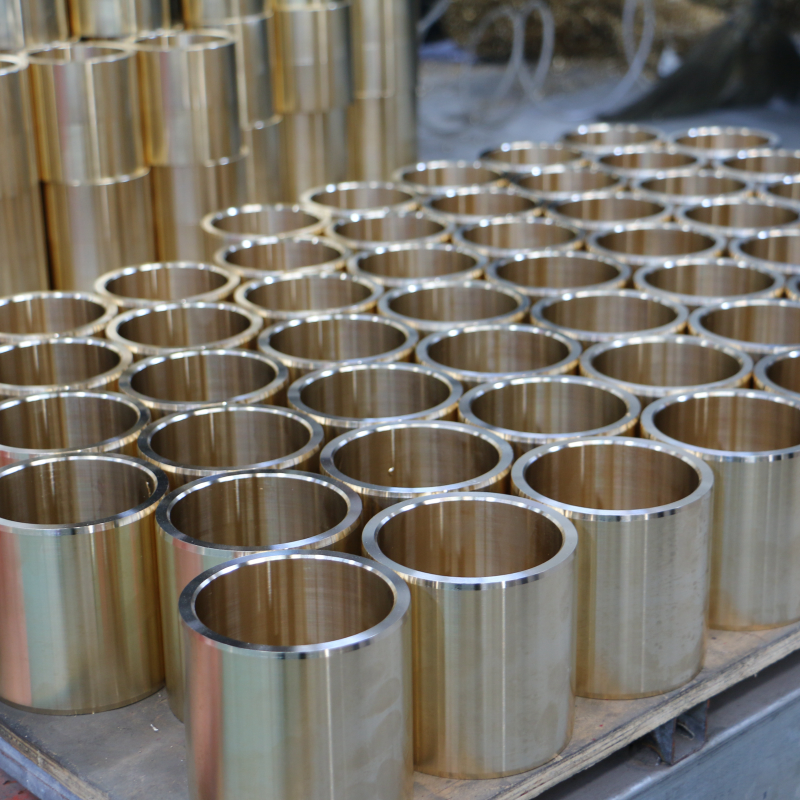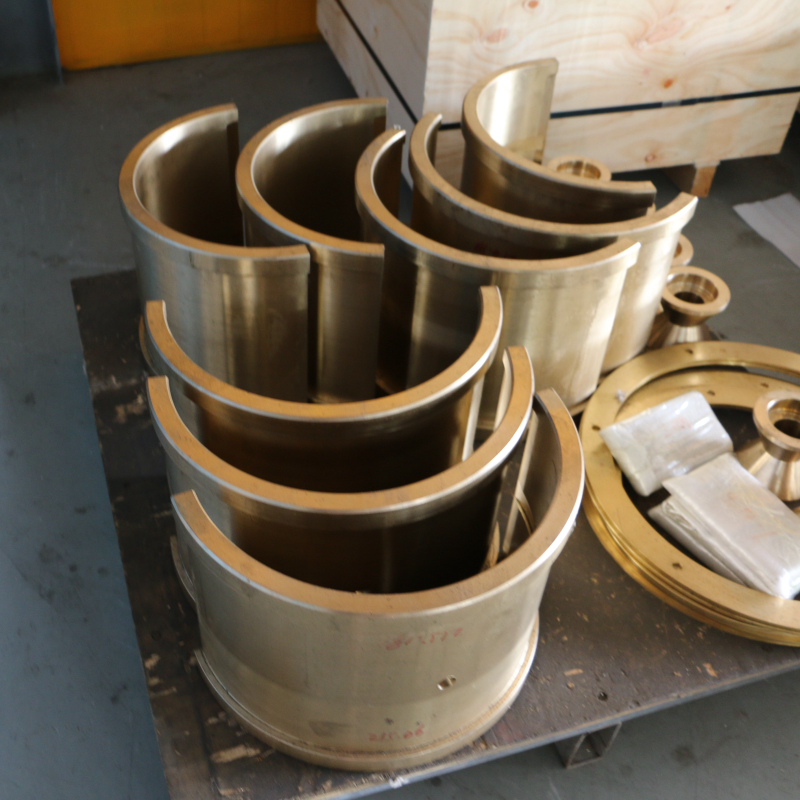 Mazhuang Village, Yuhe Town, Huixian City, Xinxiang City, Henan Province, China
Mazhuang Village, Yuhe Town, Huixian City, Xinxiang City, Henan Province, China
 Service Hotline +86 17630258963
Service Hotline +86 17630258963  Cell phone +86 17630258963
Cell phone +86 17630258963 Copper and aluminium bushings advantages and disadvantages and applicable scenarios. Below are their main differences and features:
Good wear resistance: copper bushings have excellent wear resistance, especially under high load or high-speed running conditions, which can effectively reduce wear.
Low coefficient of friction: copper material has a low coefficient of friction, which makes it able to maintain good lubrication performance for a longer period of time, reducing the wear between mechanical parts.
Strong corrosion resistance: copper bushings have strong resistance to corrosive substances such as water, acids and alkalis, and are suitable for corrosive environments.
Good thermal conductivity: copper has excellent thermal conductivity and can effectively dissipate heat, which is especially important in high temperature environments.
Higher cost: copper material is relatively expensive, so the production cost of copper bushings is higher.
Higher density: the higher density of copper results in a heavier weight, which is not suitable for applications where lightweighting is important.

Lightweight: aluminium is a much less dense material than copper, giving aluminium bushings an advantage in weight-sensitive applications, such as components in the aerospace and automotive industries that require a reduction in overall weight.
Good thermal conductivity: although not as good as copper, aluminium still has good thermal conductivity and performs well in applications with high heat dissipation requirements.
Lower cost: The relatively low cost of aluminium materials makes aluminium bushings more attractive for projects with limited budgets.
Resistance to corrosion: aluminium material forms a protective layer of aluminium oxide in the air, which is effective in preventing further corrosion.
Less wear resistance: aluminium material is not as hard or as wear resistant as copper and is prone to wear in high load or high friction environments.
Higher coefficient of friction: aluminium has a higher coefficient of friction than copper and may require more lubrication or the use of special coatings to reduce wear.
Lower strength: Aluminium has lower strength and is not as durable as copper bushings in high load applications.

Copper bushings are suitable for heavy-duty and high-temperature applications that require high wear resistance, low friction and corrosion resistance, such as bearings, heavy machinery and high speed rotating equipment.
Aluminium bushings are used in weight-sensitive applications such as aerospace, lightweight components in the automotive industry, and where good heat dissipation is required but not excessive loads.
The choice of copper or aluminium bushings usually depends on the specific needs of the application, including factors such as wear resistance, weight, strength, heat dissipation requirements and cost.
